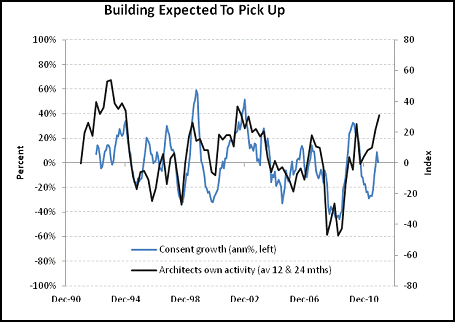
by Harbour Asset Management
And yet as we discussed last month the most significant change in the global environment has been the introduction of the Long Term Refinancing Operations by the European Central Bank (ECB). Markets were slow to react to this sea-change, but across the board indicators of European stress have reduced, allowing markets to focus on fundamental trends.
In our opinion, market positioning may continue to give momentum to equity markets, particularly cyclical sectors not impacted by more obvious secular and structural headwinds.
Whereas in 2009 all cyclical stocks performed strongly - we think 2012 may see significant divergence in performance across sectors as investors are more focussed on medium term prospects in a world still impacted by deleveraging, government austerity, and changing consumer habits led by the internet.
Our interest and exposure to cyclical companies in the portfolio is strengthened by three factors:

At the same time some cyclical sectors are being impacted by significantly negative structural forces.
For instance, traditional retailers have all reported market share loss to the internet.
In addition high Australian and New Zealand dollars are encouraging parallel importing that is impacting margins.
Similarly print and free-to-air TV media are facing the most rapid decline in reader and view-ship, and with that a collapse in potential advertising revenues.
Consumer deleveraging is also limiting growth in other cyclical sectors, with Australian consumer credit growth only very gradually expanding.
As investors reappraise their portfolios, the scope of investable sectors and stocks that may offer exposure to a global recovery becomes more limited, and as a result potential valuation shifts may become more pronounced.
Already we have seen several stock moves in January pre-empt potential turning points in profits.
In our portfolios, we see scope for over-weighting resources, energy and related sectors as still providing the most direct exposure to a recovering global economy.
We have added to these global exposures in the month by purchasing Atlas Iron and Brambles, and by adding to existing positions in Incitec Pivot and Asciano.
Locally in New Zealand, Fletcher Building was one of the top performing stocks in January, and yet Fletchers just performed broadly in line with the Australian building sector.
This highlights both the perception that further policy easing in Australia may lift building starts and that investors were generally "short" building stocks. The building sector provides an interesting example of a cyclical sector where the structural headwinds are significantly reduced by prospective pent up demand.
BNZ's latest Economy Watch highlights how important the construction sector is for New Zealand.
Yet there has been so much disappointment with the building sector in 2011, with for example Fletchers downgrading their profits effectively 2 times as delays to the Christchurch rebuild occurred.
We know that 2012 ought to be different. In 2011, only $259mn of $11.8bn of building consents issued related to the rebuilding of Canterbury. At the same time, BNZ say that the EQC have now paid out $2.4bn for buildings and that a total of more than $20bn will eventually be paid out. More than $14bn is now accrued to be paid to NZ residents from overseas insurance companies.
The EQC fund claims are expected to top $6bn, and government funding beyond that has now lead some to estimate totals between $25-$30bn will be paid out. A fair chunk of these claims will be settled in 2012.
In addition, architects more generally in New Zealand are more upbeat on housing and commercial work. With that as background, it is hard not to see a positive backdrop for New Zealand building growth for several years. We remain overweight Fletcher Building in client portfolios.

At the same time, Australia has its own two speed economy, with large scale projects this year expected to contribute over 2% points to growth. This is the year of large scale investments in port infrastructure, in LNG conversion plants and in mining. From a volume expansion perspective we remain attracted to the LNG sector in particular and we have lifted further exposure to related industries.
Many investors have been expecting a collapse in Chinese demand for commodities (some commentators have been bearish for 2-3 years). A key viewpoint that negative commentators have is that the policy of reducing the pace of housing growth (and limiting speculation in the housing sector) will create a collapse in residential building growth and a consequent fall in metal and general commodity demand.
There is no doubt that the Chinese government is aware of these risks with numerous speeches highlighting its concern to "reshape" the economy. In fact the evidence to-date is much better than many market commentators expected with the economic surprise index for China lifting significantly in early 2012 as retail activity appears to be offsetting some weakness in manufacturing. Commodity markets have lifted as a result and from a New Zealand perspective we could expect that dairy and primary produce have a stronger growth profile into a growing Chinese consumer market. A slowing Chinese economy remains a significant risk for global markets and we will be monitoring data closely in coming months.
Important disclaimer information
| « NZ Credit: A top performer in 2011 | Domestic v global fixed income » |
Special Offers

© Copyright 1997-2024 Tarawera Publishing Ltd. All Rights Reserved